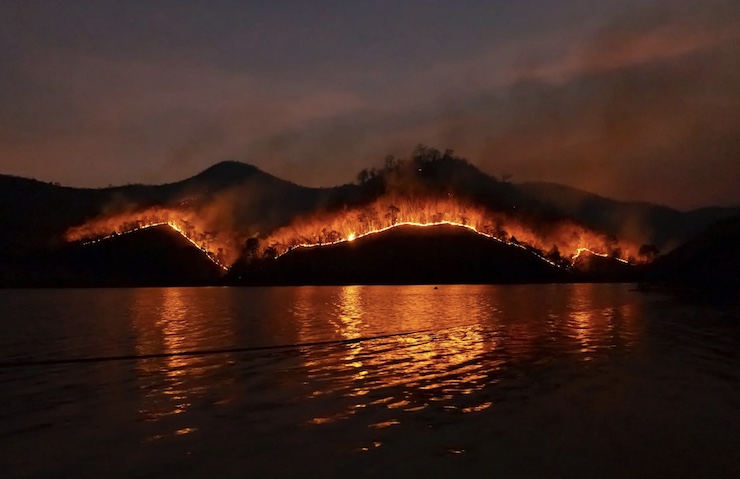
Wildfires have grown in number and intensity in recent years. The raging infernos – more than 60,000 annually, mostly in the West – have devastated property and people, and permanently scarred the nation’s landscapes. Yet, the nation’s firefighting agencies, while clearly overwhelmed, still have mixed feelings about whether to deploy drones to help them contain the blazes.
But all that may soon change.
Last month, the FAA and NASA began collaborating with a private company, XWing, to research how a large fixed wing drone – the infamous Predator, first deployed during the US war in Iraq – might be integrated into wildfire suppression operations. Currently, some small drones are incorporated into firefighting operations in some locales, but their role tends to be limited to overhead surveillance. Many firefighting agencies still view the addition of drones as a mixed blessing; for years they’ve had to contend with reckless drone intrusions from private hobbyists and news media organizations that have complicated their operations. That tends to give traditionalists good reason to avoid drones altogether. And many agencies still struggle to sort out the air traffic management issues that can arise when they deploy their helicopters and fixed wing aircraft. Add drones to the mix? No thanks, they say.
However, unmanned aerial aircraft, operating under official auspices, could be a huge boon to firefighting, industry experts argue. Specially equipped surveillance drones could fly into the thick of a blaze to collect critical data on the fire’s speed and likely trajectory. Other drones can begin seeding the clouds above the fire with special chemicals to stimulate artificial rainfall, Cargo drones might deliver food and water and other critical supplies to aid firefighters on the front lines. And heat-sensing infrared drones, unlike helicopters and small aircraft, can also fly in the dark, even shouldering the bulk of the water suppression at night, then receding into the background as daylight approaches.
The key issue, of course, is “interoperability” – how to manage the complex moving parts of a combined air and ground-based firefighting operation efficiently and in a timely manner, before a fire rages out of control. Currently, these operations tend to be managed and integrated manually, resulting in a loss of response time and inefficiency in resource use. NASA and the FAA’s Crosscutting Operations Strategy and Technical Assessment research program, known by its acronym COSTA, are conducting simulations and collecting data to establish a unique Air Traffic Management system, based on an AI-generated algorithm, that could be tailored to future fire-fighting operations, and even managed autonomously, reducing the safety risk to pilots and their aircraft as well as firefighters on the ground.
Xwing’s collaboration with NASA and the FAA is part of a broader 3-year partnership with the two agencies to explore autonomous aviation solutions in a number of industries, not just firefighting. The company was founded in 2016 and for several years has conducted 400 weekly piloted cargo operations for the United Parcel Service (UPS) between major US airports. In 2021, the company, with NASA’s support began experimenting with Cessna Caravan planes that could conduct the same UPS operations semi-autonomously, allowing the planes to autoland at airports without precision instrument approaches.
Xwing and the FAA are planning to begin formal testing of their new COSTA fire-fighting system in northern California in May 2023, before the onset of next year’s wildfire season. Ultimately, Xwing, NASA and the FAA plan to test a full range of autonomous air management systems in a wide range of emergency and disaster relief settings, for application both in the United States and abroad.
|